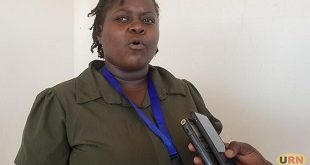
The firms are investing in staff, information technology and standards
Kampala, Uganda | JULIUS BUSINGE | As Uganda slowly moves towards commercial oil production, companies in the freight and logistics sector are preparing their staff, investing heavily in information technology as well as standards to tap into the multi-billion sector.
“Oil and gas is a big thing; it is going to be big business; for us we are ready and prepared,” Humphrey Asiimwe, the general manager at Multilines International Limited, a logistics company told The Independent in an interview.
Asiimwe said they have invested heavily in training staff on matters clearing and forwarding to be able to serve in the sector and in the oil and gas.
The company is also embracing partnerships by belonging in groups like Uganda Freight Forwarders Association. They have attained trade facilitation status – the Authorised Economic Operator (AEO) – from the URA to facilitate faster clearing of goods.
They have also built strong information technology systems to monitor goods in transit to avoid any likely losses involved in the trade. They have also continued to maintain international standards by acquiring ISO certifications.
Asiimwe is not alone. John Kutyabami, the head of the East Africa Customs and Freight Forwarding Practicing Certificate (EACFFPC) told The Independent that they are preparing sector workers for oil and gas business through training and skills development.
The programme (EACFFPC) is designed to equip trainees with skills and knowledge to enable them go about their roles as customs agents. It introduces trainees to the profession and covers the basics of freight forwarding. It also covers the management aspect on issues of communication, planning, time management, ethics and integrity as essentials in sound business management.
A total of 5000 clearing and forwarding staff from different logistics companies have so far been trained since 2008 when the programme started, according to Kutyabami. The training programme takes a maximum of one year.
EACFFPC is a joint training program of the East Africa Revenue Authorities and the national freight forwarding associations affiliated to the Federation of East African Freight Forwarders Associations (FEAFFA).
“The good thing is that the big and medium sized players in the freight and logistics are all embracing the programme,” Kutyabami said, “We are preparing for all sectors that require logistics services including oil and gas.”
He said so far the programme has reduced errors and mistakes by 90% that were being made in the process of conducting industry transactions.
These revelations, among others, came out during the second annual logistics expo and conference in Kampala that attracted close to 500 participants. It happened from August 21-22.
It was held under the theme ‘innovative and sustainable solutions for freight logistics’.
Elly Karuhanga, a founding partner of Kampala Associated Advocates and chairman of Uganda Chamber of Mines and Petroleum said over 50% of the money that will be pumped in the oil and gas will be earned by F&L companies. Karuhanga previously served as President of Oil Company, Tullow Uganda.
Approximately $20bn is expected to be invested in the oil and gas sector ahead of production at around 2022-2023. Uganda has crude oil reserves of 6.5 billion barrels, according to government data.
“There is good business for you in the next 30 years,” Karuhanga said, adding that early preparation is key owed to the fact that the oil and gas sector will require over 2, 500 trucks and 2, 000 professional drivers to move goods and people.
More opportunities will be in the supply chain management, freight, forwarding and customs clearing, warehousing, transport and lifting services and more.
However, Karuhanga revealed that for companies to benefit from the sector, they will have to comply with global standards regarding environment, health and safety.
Build capacity
Karuhanga said that as companies prepare to benefit from the oil and gas sector, they must get ready to comply with local content laws, do enterprise development, use locally produced goods and services, transfer of knowledge and technology, work on partnerships with international freight and logistics firms.
“Guys, you have to be ready as the final investment decision comes…its delay was a blessing in disguise,” Karuhanga said. “If FID happens tomorrow, Uganda will benefit more than it would have [benefited] yesterday,” he said.
He also told them to use services of professional firms – audit firms, law firms, and insurance companies if they are to attract good deals from sector players.
“Do not sign any agreement without a lawyer…or a professional person in any other field,” he said.
Enter other players
Meanwhile, other speakers were equally inspiring and exposing opportunities for freight and logistics players at the conference.
Dicksons Kateshumbwa,the commissioner for customs and current chairperson of the World Customs Organisation said that F&L is very critical to people’s lives.
“…everything we have here is transported from somewhere to somewhere,” he said. In 2018 alone, he said URA recorded and cleared 76, 400 containers for both imports and exports. This represented a 15% increase from the previous year.
He said that out of this total, 39% originated from China, 16% in India and 6% in United Arab Emirates. That is money for F&L players.
However, he also stated that sector players and government need to support export promotion activities as most containers return to exporting countries half full or empty. He also said the country registered a 10% growth in air traffic.
He urged players to invest heavily in digitisation and new technologies to serve their clients faster as it is the case with URA.
He said URA’s investment in technology specifically the Single Customs Territory is yielding results, with 52% of customs revenue now collected via this scheme. The target is to reach 75% in the few years to come.
Moses Sabiiti, the country director for TradeMark East Africa in Uganda and South Sudan said the government and private sector need to do more to support F&L sector.
He said Uganda has a low ranking on the Logistics Performance Index (LPI) and received a score of 25.4 out of 100 overall for logistics risk, placing it 38th out of 48 countries in the Sub-Saharan Africa (SSA) region.
“Reduced vigour for regional integration is indicative of the need for the private sector to play a more proactive role in building consensus, sustaining political buy-in and strengthening commitment to resolving trade and investment issues in the East African Community,” Sabiiti said.
He added: “Without sustained private sector pressure and expanded advocacy frameworks, the focus on integration and socio-economic development will remain in the balance.”
TMEA has invested heavily in OSBP and Sabiiti promised that more trade facilitation support is coming to partly support the L&F sector.
“Logistics represent a key factor in improving Uganda’s competitiveness, and is one of the most promising breakout points,” he said.
In respect of economic growth, he added, logistic activities directly serve the goal of making the economy dynamic primarily by increasing investments, net exports and equalising the regional imbalances in consumption.
Hussein Kiddedde, the chairperson of Uganda Freight Forwarders Association (UFFA) said the F&L conference was one avenue to accelerate debate geared towards improving skills development, knowledge sharing, technology transfer and innovations for sector players to be able to serve the growing markets in the region, Africa and the world in general
“We intend to align our views on whatever is happening in the East African Community and beyond so that we can position freight logistics better, to meet the dynamic demands of these projects and opportunities,” Kiddedde said.
“The readiness will only be achieved through joint efforts of both private and the public sectors. We must face the fact that even with such an arrangement, economic patriotism remains critical for every nation,” he added.
Government’s view
Monica Ntege Azuba, the minister of works and transport said the government together with development partners has put in place One Stop Border Posts (OSBPs) to lower the cost of clearing goods at border points of Malaba, Busia, Mutukula, Mirama Hills and others are under construction.
She said the government is rehabilitating the country’s old railway line and that funding negotiations for the planned regional Standard Gauge Railway (SGR) are nearing completion.
The other projects are the expansion of Entebbe International Airport to deal with the growing cargo and passenger traffic, she said.
Azuba also said that a new airport at Kabale in Hoima is being constructed to support oil and gas sector and that the government has revived Uganda Airlines to further support growth of air transport.
Facts and figures about F&L in Uganda
The sector comprises of trade and transport infrastructure (roads, railways, inland and marine port facilities, storage and warehouse and bonded facility operators; customs and other border agencies; financial services and ICT service providers and infrastructure; and government.
According to the World Bank, as of 2016, imports of transport and logistics services make up 55% of Uganda’s total service imports while Uganda’s transport and logistics exports are only 3.7% of Uganda’s total services exports.
About 208,000 people are employed in the sector in Uganda and the number could rise to 522,000 by 2030.
****
 The Independent Uganda: You get the Truth we Pay the Price
The Independent Uganda: You get the Truth we Pay the Price



